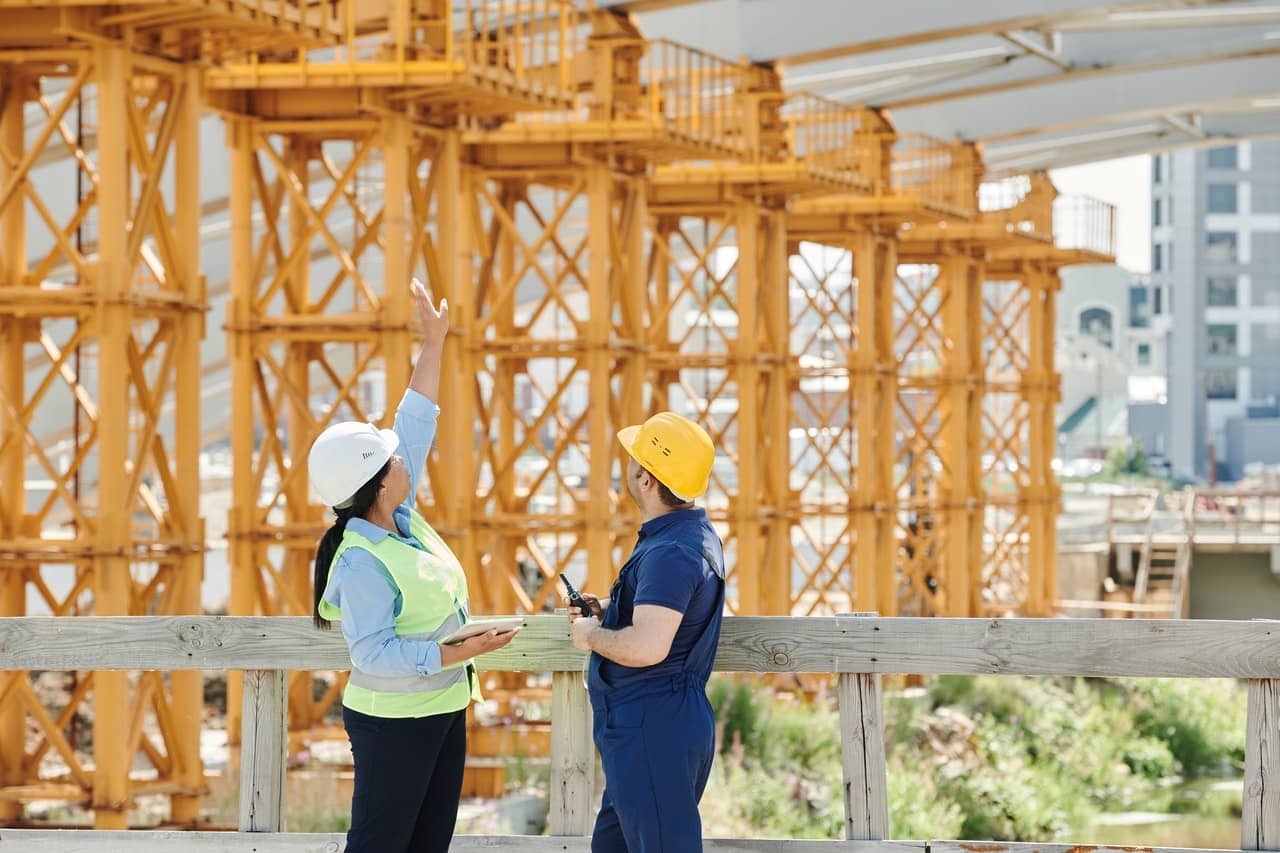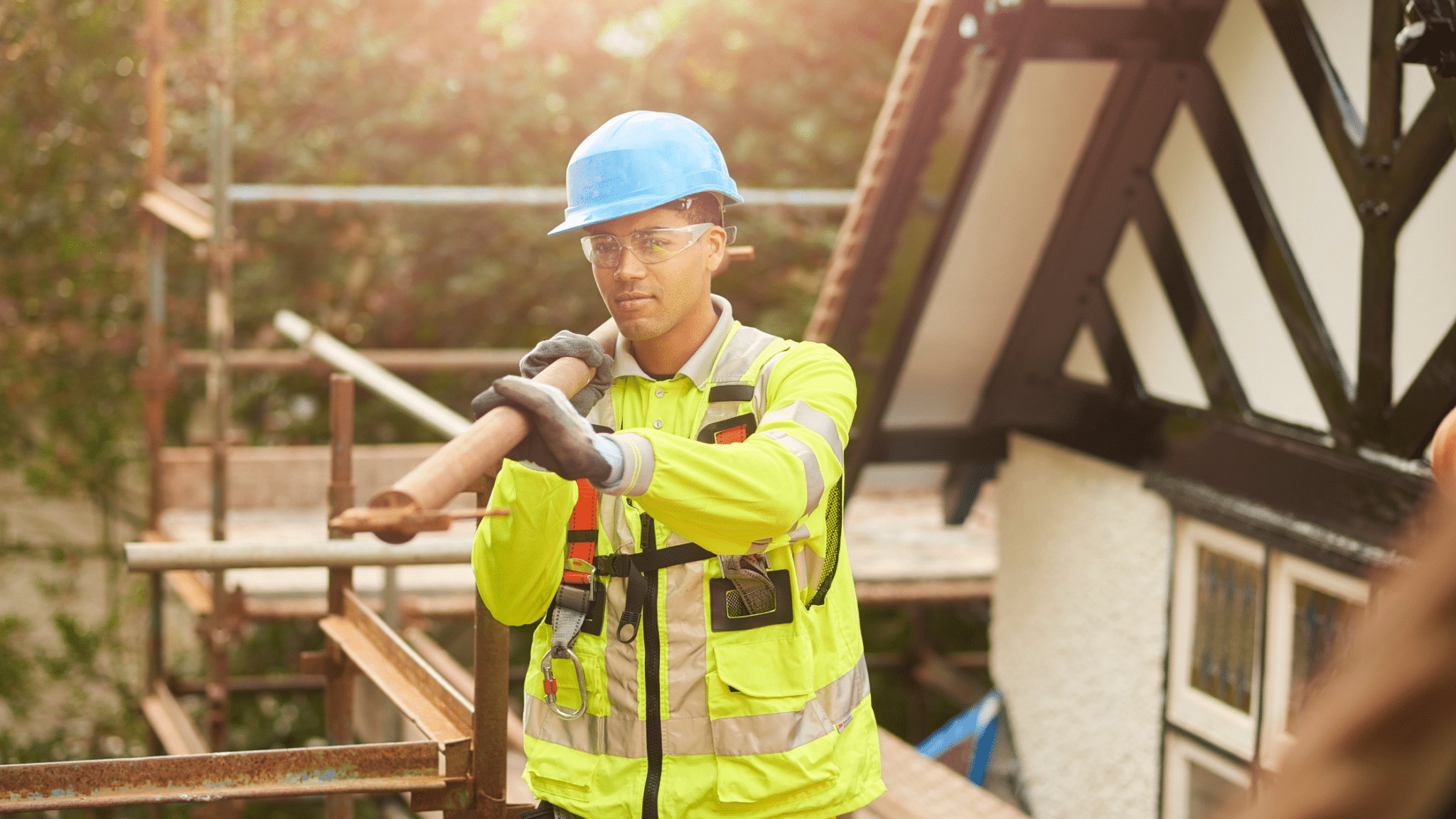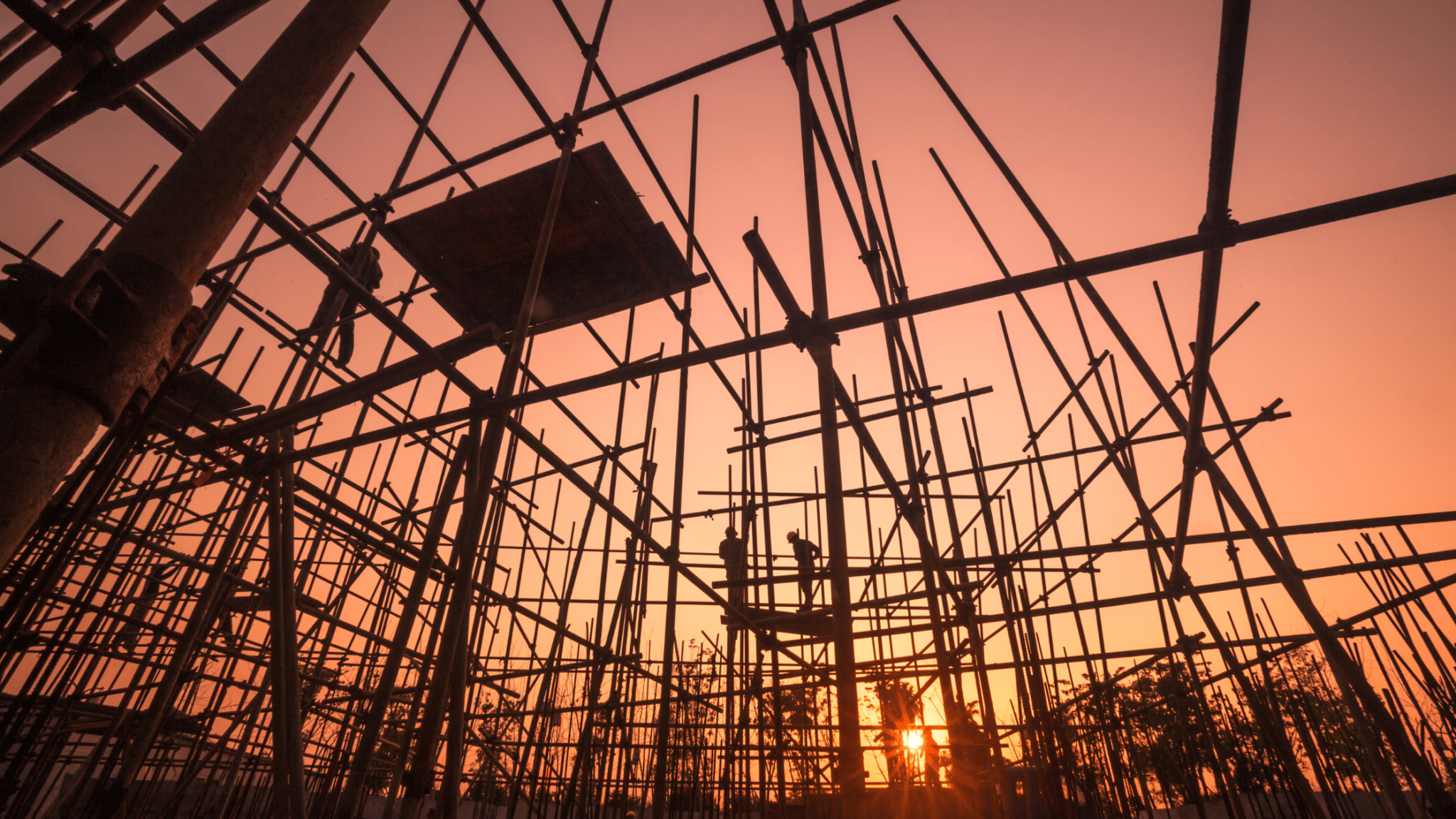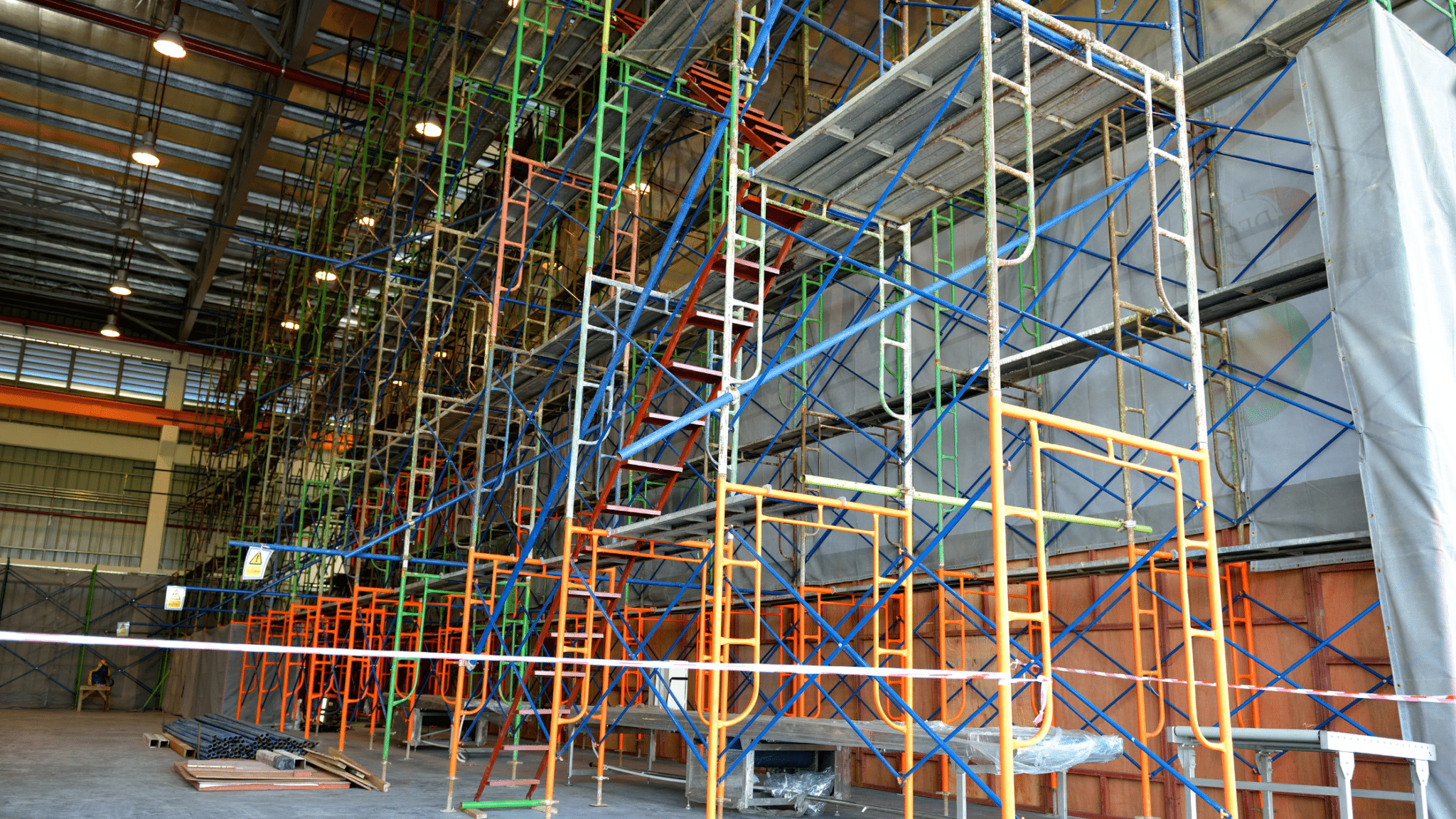Understanding a scaffolder's job responsibilities ensures you avoid scams and get your money's worth. Also,…

What Are The Scaffolding PPE Requirements?
Working with scaffolding can be dangerous when safety is not considered at all times. Wearing PPE is an essential requirement that can save lives and minimise accidents to yourself and your colleagues. In this blog, we will detail the required scaffolding PPE and other steps that should be taken when working at height or during extreme weather conditions.
So what are the scaffolding PPE requirements? The scaffolding PPE requirements include wearing a hard hat, protective clothing and heavy duty boots. Other safety measures can be put in place to protect yourself against falling objects, slips, and extreme weather conditions. Ensuring that the scaffolding is erected correctly from the start is another essential requirement.
Read on to discover the main PPE requirements when working with scaffolding and extra safety precautions that can be taken.
What PPE Are Scaffolders Required to Use?
To protect themselves and others in the vicinity, scaffolders are required to use various forms of PPE, especially if they will be using any other specialised equipment. Safety should be the priority of all parties from the very beginning, starting with the proper erection of the scaffolding, controlled by a competent supervisor. The main types of scaffolding PPE include:
Hard Hats
Working in the scaffolding industry brings the danger of items falling from above such as debris, tools and materials. A hard hat is an essential part of any scaffolder’s kit as it will protect your head from damage to the head that could mean weeks away from work or in extreme cases, fatality.
Harness
The risk of falling is high when working on scaffolding, especially if the building is several floors high. The most basic form of protection against falling is wearing a harness while moving around the scaffolding. This is essential when working on higher areas where there is no safe platform to stand on. Although there is no minimum height requirement for wearing a harness while working on scaffolding, scaffolders have received fines in the past for not taking steps to prevent serious accidents.
In our recent blog, there are some more examples of where a harness would be a good extra safety step.
Clothing
The clothing worn by scaffolders should keep them warm and dry against the elements. Overalls are a good choice as they are less likely to snag on materials or the scaffolding itself, minimising the risk of getting caught and falling. If they will be working in low lighting conditions, the protective clothing should be highly visible, especially if there are any construction vehicles in the vicinity to significantly reduce the risk of accidents. High visibility clothing allows all scaffolders to be aware of each other’s positions at all times, meaning they can easily find them should an accident happen.
Footwear
Footwear is another important aspect of scaffolding PPE to get right as there are lots of potential tripping hazards, slippery areas and sharp objects. Steel toe boots that are non-slip are essential to protect scaffolder’s feet from any misplaced tools left on the scaffolding platforms or heavy falling objects that can cause a lot of damage.
Gloves
Thick gloves can not only keep scaffolder’s hands warm, they can also protect them from sharp tools and general damage from working with different materials daily. Their main purpose, however, is to provide additional grip when climbing up and down the scaffolding and transferring equipment and materials around the structure. Should you slip or fall when working at height, the gloves also provide an extra layer of protection against damage to your hands.
Ear & Eye Protection
Your scaffolding project may require additional protection depending on the nature of the work. If, for example, you will be using specialist equipment, such as heavy machinery that has a noise level over 85dB(A), ear protection must be worn to protect you against conditions such as hearing loss or tinnitus. You may also choose to wear ear protection and safety glasses to prevent hazardous objects from entering or damaging your body.
Accidents can sometimes have a domino effect, causing bigger issues, so combining all of the PPE included in this section will create an almost fool proof solution. Another important thing to consider is being highly aware of your surroundings at all times while within the vicinity of the scaffolding so you minimise the risk of danger for yourself and others.

What Extra Protection is Required When Working At Height?
As mentioned above, harnesses are an essential scaffolding PPE step when working at great heights, to prevent falls. Although there is no minimum height for wearing harnesses in particular, there are regulations in place for working at height. These regulations state ‘ the minimum height where workers required fall protection and instead defines that a place is “at height” if a person could be injured falling from it, even if it is at or below ground level.’
A fall of six feet or more can cause fatality, anything below can cause serious damage to the body so any extra precautions that are put in place will help to protect everyone in the area. Guard rails, toe boards and barriers should be added to the scaffolding to provide a rigid base that supports scaffolder’s weight and any loads that will be added.
For more information on working at height, read our recent blog about extra safety precautions that can be put into place to protect yourself.
What PPE is Required for Extreme Weather?
Extreme weather conditions can affect scaffolder’s ability to work safely, especially when working at height. There are no official PPE requirements for extreme weather conditions, however we strongly recommend that you use PPE to protect yourself against the elements.
To start with, the scaffolding must be properly secured to withstand the worst possible weather conditions. Rain and snow can cause a slippery work surface and impact scaffolder’s physical health, particularly in colder temperatures. It can also slow progress as you are unlikely to work at full capacity. Wind is a dangerous weather condition as it can blow you off balance, especially when working at height.
Check out our recent blog for more information about how weather can affect working on scaffolding.
Expert Scaffolding Advice at Hi Point Scaffolding
As Sheffield’s leading scaffolding company, Hi Point have a wide range of accreditation and every single job that we carry out is fully insured and paperwork compliant, giving each of our clients the peace of mind they need. We have a wide range of quality access services available for hire as well as PASMA training courses.
For more information, contact a member of our expert team and find out how we can help you today.



